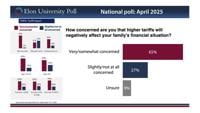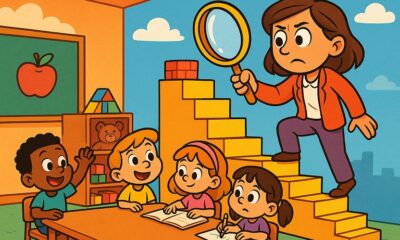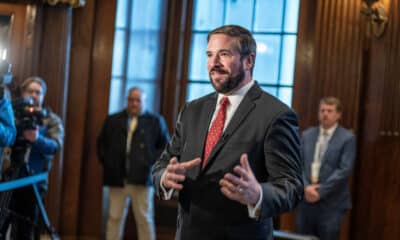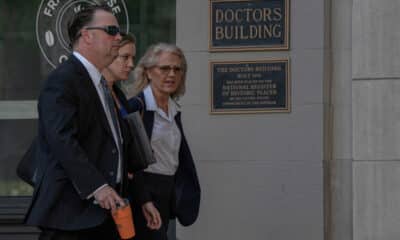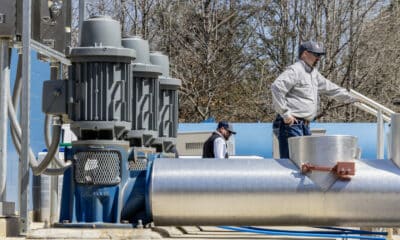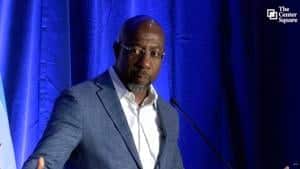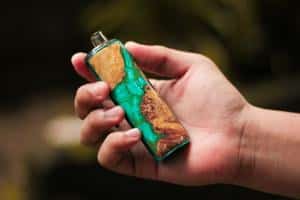News from the South - Arkansas News Feed
Fayetteville police issue warning for college students amid opioid epidemic
SUMMARY: The Fayetteville Police recently recognized one officer with two Naloxone Life-Saving Awards for using the drug to save lives during opioid overdoses. Since 2018, Naloxone has been used over 100 times in the area. Sgt. Stephen Mauk highlighted the ongoing opioid epidemic affecting communities nationwide, emphasizing Fayetteville’s potential for increased cases due to its size. The police department, in collaboration with the 4th Judicial Drug Task Force, is actively working to eliminate these drugs from the streets, pointing out the dangers of unknown substances like fentanyl that can have tragic consequences.

With college students in Fayetteville navigating their way through a new school year, officials at the department say this could be a vulnerable time for incoming students.
Subscribe to 40/29 on YouTube now for more: http://bit.ly/PTElbK
Get more Northwest Arkansas news: http://www.4029tv.com
Like us: http://facebook.com/4029news
Follow us: http://twitter.com/4029news
Instagram: https://www.instagram.com/4029news/
News from the South - Arkansas News Feed
Report: Arkansas pre-K landscape meets most quality standards, still has room for improvement
by Tess Vrbin, Arkansas Advocate
April 29, 2025
Arkansas preschool programs met eight of 10 benchmarks in a national early childhood education group’s analysis of the state’s pre-K efforts.
Some of the standards Arkansas meets are class sizes of 20 children or fewer, at least one teacher per every 10 students, specialized pre-K training for teachers and “comprehensive, aligned, supportive, culturally sensitive” early learning and development standards, according to the National Institute for Early Education Research (NIERR), housed at Rutgers University.
Arkansas falls short in its early childhood education degree requirements and annual staff professional development, the report noted. Arkansas does not require all early childhood educators to hold bachelor’s degrees, and the state requires a minimum of 15 hours of professional development per year while the report says at least 30 should be required.
Arkansas ranked 31st nationwide in state spending on early childhood education during the 2023-24 school year, and its spending per student decreased while its enrollment of 3- and 4-year-olds in pre-K remained steady, according to NIERR’s nationwide analysis of state preschool programs released Tuesday.
The state’s preschool program, Arkansas Better Chance (ABC), serves children ages 3 and 4 from families earning up to 200% of the federal poverty level. ABC enrolled 20,311 children during the last school year, accounting for 19% of 3-year-olds and 32% of 4-year-olds statewide, according to the NIERR report.
While ABC enrollment increased by 1,063 children compared to the previous school year, overall spending decreased by more than $43 million, and spending per student decreased by $2,564, with those figures adjusted for inflation, the report states.
Federal funds helped Arkansas childcare providers stay afloat, but staffing struggles continue
Arkansas spends $2,016 less per student and nearly $41 million less overall than what the report considers “adequate” for its early childhood education landscape. The report defines adequacy as enough money to “support minimum quality standards and provide K-12 pay parity for preschool teachers within their current operating structures.”
The starting annual salary for Arkansas’ K-12 teachers increased from $36,000 to $50,000 in 2023 due to the wide-ranging LEARNS Act. This pay disparity between educators who teach 5-year-olds as opposed to 4-year-olds makes it challenging to maintain a robust pre-K workforce, early childhood education administrators told the Advocate in November 2023.
Arkansas has not implemented any “statewide initiatives or minimum set pay” to bolster the early childhood education workforce, which not only affects the overall quality of the system but also forces some preschool educators to rely on public assistance to meet their needs, Nicole Carey, policy director for Arkansas Advocates for Children and Families, said in an interview Monday.
State spending per child enrolled in pre-K was at its lowest in nearly two decades during the 2023-24 school year, according to the NIERR report. Spending spiked during the COVID-19 pandemic but has since dropped, and it saw little change and no upward trend during most of the 2010s. Meanwhile, Arkansas’ rates of child enrollment in pre-K have returned to their pre-pandemic levels after decreasing in the early 2020s, according to the data.
“It would be great if we could have additional state investment in the ABC program, either toward educator wages or other types of workforce support,” Carey said.
Arkansas Democratic lawmakers introduced a bill this year that would have created a tax credit for early childhood educators, and a Republican-sponsored bill would have created a similar policy for “a licensed childcare provider.” Neither bill advanced.
GET THE MORNING HEADLINES.
Eleven states met nine or 10 of the NIERR standards, and none of those 11 states were “low spenders” because “money does matter for quality,” Steve Barnett, NIERR’s senior director and a co-author of the report, said in a virtual press briefing Friday.
Overall, Arkansas ranked 8th nationwide in 3-year-olds enrolled in pre-K, while 15 states do not have pre-K programs for 3-year-olds at all, according to the report. Arkansas ranked 24th in enrollment of 4-year-olds.
Additionally, 5% of 4-year-olds and 7% of 3-year-olds in Arkansas were enrolled in the federally-funded Head Start program in 2023-24, while 15% of 4-year-olds and 4% of 3-year-olds were enrolled in special education, the report states.
Arkansas has 28 Head Start locations statewide. Federal employees who administer Head Start have faced recent layoffs, but changes on the federal level have not impacted the program in Arkansas, said Leslie Taylor, spokesperson for Head Start’s Arkansas grantee, the University of Arkansas for Medical Sciences.
The state Department of Education oversees the Office of Early Childhood, which was under the jurisdiction of the Department of Human Services before the LEARNS Act went into effect in 2023. The law also required “local lead” organizations throughout the state to assess local and regional access to pre-K and what gaps or barriers should be addressed.
Need to get in touch?
Have a news tip?
Most of the local lead organizations are education cooperatives, along with some school districts and child care organizations, according to the Department of Education.
AACF is “hopeful” that local leads will create “positive growth” in their areas, Carey said.
“For the local leads that I’ve spoken with, they have put in a lot of work and are doing a good job trying to connect with their communities,” she said.
Arkansas Advocate is part of States Newsroom, a nonprofit news network supported by grants and a coalition of donors as a 501c(3) public charity. Arkansas Advocate maintains editorial independence. Contact Editor Sonny Albarado for questions: info@arkansasadvocate.com.
The post Report: Arkansas pre-K landscape meets most quality standards, still has room for improvement appeared first on arkansasadvocate.com
Note: The following A.I. based commentary is not part of the original article, reproduced above, but is offered in the hopes that it will promote greater media literacy and critical thinking, by making any potential bias more visible to the reader –Staff Editor.
Political Bias Rating: Center-Left
This article presents a detailed analysis of Arkansas’ early childhood education programs, focusing on the state’s funding, standards, and legislative efforts. It highlights shortcomings in funding and support for pre-K educators and advocates for increased investment and professional development. The inclusion of perspectives from education advocates and Democratic lawmakers, and emphasis on the need for state intervention and funding parity, align with center-left priorities on education equity and public investment. The article is factual and balanced but leans toward supporting stronger government involvement in education funding and workforce support.
News from the South - Arkansas News Feed
City of Little Flock rebuilding almost a year after tornadoes
SUMMARY: Almost a year after tornadoes hit Little Flock, rebuilding efforts are slow but ongoing. City Hall was destroyed, and officials are now operating out of a trailer. The city council approved negotiations with Nabholz Construction for a new building, though the total cost remains uncertain. FEMA will cover 75% of rebuilding costs, with the city seeking funds for the remaining 25%. Trade war concerns could increase material costs. Debris remains in some areas, but neighbors continue to help with cleanup. The mayor hopes to start construction in 3-4 months but may need additional grants if costs rise. A local nonprofit also struggles to clear debris due to limited funds.

City of Little Flock rebuilding almost a year after tornadoes Subscribe to 40/29 on YouTube now for more: http://bit.ly/PTElbK Get …
News from the South - Arkansas News Feed
Research into biodegradable plastics involves Arkansas scientist
by John Lovett, Special to the Advocate, Arkansas Advocate
April 28, 2025
FAYETTEVILLE, Ark. — While biodegradable plastics currently account for a half percent of the hundreds of millions of tons of plastic produced annually, a growing demand for the alternative reflects consumer awareness and corporate response.
Researchers from Brazil, Germany and the United States document a multi-faceted global snapshot of the environmental aspects and trends surrounding single-use plastics in a review article titled “Rethinking single-use plastics: Innovations, policies, consumer awareness and market shaping biodegradable plastics in the packaging industry.” The piece was recently published in Trends in Food Science & Technology.
The researchers state that the largest area of application for biodegradable plastic materials is the packaging segment, which accounts for about half of single-use plastic production. The biodegradable packaging market was estimated to reach about $105 billion in 2024 with an expected annual growth rate of about 6 percent between 2024 and 2029, and 44 percent of patents filed worldwide for biodegradable polymers relate to packaging, the study noted.
About 474 million tons of plastics are produced globally each year, and about a third of it is used for packaging, including single-use plastic products for food and beverage containers. Of this, only about 25 percent gets recycled. Plastic production, the article adds, is expected to triple by 2060 following a trend of transitioning from durable plastics to single-use plastics.
Global plastic production increased from 369 million tons in 2016 to 404.5 million tons in 2020, partly due to materials used in the COVID-19 pandemic.
Citing a 2021 study from the same research group in Brazil, the review article noted the pandemic “exacerbated the use of single-use plastic and increased the demand for personal protective equipment and packaging, leading to remarkable growth in the plastics industry and generating more than 8 million tons of waste, mainly affecting Asia, Europe and America.” The same study mentions that the pandemic expanded food packaging due to a shift in eating habits and an increase in online purchases.
Despite the transition to single-use plastics, an increasing number of patents and successful research and development of biodegradable plastic materials has sparked the interest of industries to invest in large-scale production technologies for renewable monomers and polymers, the researchers added.
Looking to corn
Barone is supervised by Ana Elizabeth Cavalcante Fai, corresponding author for the review article, a food engineer and associate professor in food science at Rio de Janeiro State University, where she coordinates the Laboratory of Multidisciplinary Practices for Sustainability at the Institute of Nutrition.
“Food packaging plays a vital role in ensuring food safety and quality,” Fai said. “However, it is increasingly unjustifiable to produce short-life cycle packaging using synthetic plastics that persist in the environment for up to 400 years. Even more concerning is the growing awareness that plastics don’t degrade completely — they fragment into micro- and nanoplastics, which are now recognized as widespread environmental pollutants and an emerging public health concern.”
Ferreira said that while biodegradable plastics are a promising long-term alternative solution, it is not where he expects to see the biggest short-term impact on the reduction of overall plastic use.
Fai and Barone said that plastic has undeniably transformed modern life since its mass production began in the 1950s. However, despite its versatility and usefulness, “plastic has often been misused and is frequently applied to single-use items which are discarded with little regard for environmental consequences.”
“Most of the plastic ever made still exists in some form today,” Fai said. “When people say, ‘just throw it away,’ we must remember — there is no ‘away.’ Everything remains within the boundaries of our shared environment. The planet simply cannot absorb this volume of waste indefinitely. If current trends continue, some projections estimate that by 2050, there could be more plastic than fish in our oceans. This is not just alarming — it’s a call to urgent action.”
A “circular economy,” Ferreira said, could have a larger long-term impact on single-use plastic reduction. A circular economy broadens the familiar slogan of “reduce, reuse, recycle” to “rethink, refuse, reduce, reuse, repair and recycle,” in that order.
Brazil has an extraordinary biodiversity, Fai said, and a significant agro-industrial biomass base, rich in polysaccharides such as starch, pectin, lignin, and others. These valuable raw materials can be transformed into bio-based and biodegradable packaging for the food industry, she added.
“Through international partnerships, where each research group contributes its unique expertise, we can join efforts to develop sustainable and innovative packaging solutions,” Fai said. “This collaborative approach is key to building a more sustainable future for food systems worldwide,” said Fai and Barone.
“We are part of the problem as consumers, but at the end of the day, as consumers we can be part of the solution,” Ferreira said.
Co-authors of the review article on single-use plastics include Carollyne Maragoni-Santos of Federal University of the State of Rio de Janeiro; Patricia Marques de Farias of the Sustainable Packaging Institute in Germany; Camila Marcolongo Gomes Cortat of the Laboratory of Multidisciplinary Practices of Sustainability, Institute of Nutrition at the State University of Rio de Janeiro; Bianca Chieregato Maniglia of the University of São Paulo; and Ricardo Schmitz Ongaratto in the chemistry school at Federal University of Rio de Janeiro.
Plastics on the farm
“In our transplant production, rather than using the single-use plastics that you see in a store when you get plants, we use extra sturdy plastic transplant trays,” Friedrich said. “We know farmers who have used these for 20-plus years and are still strong.”
Friedrich said the CAFF farm also uses a paper pot system adapted from Japan that uses a chain of paper strips to form cells in which they grow the transplants. The training farm also uses a landscape fabric instead of plastic mulch for weed control, which can be reused over many years.
However, use of single-use plastic is unavoidable at times. For its “tractor-scale” production, CAFF uses the black plastic seen on strawberry beds at u-pick operations.
“Plants respond well to plasticulture because it warms the soil early, creates a weed free zone and delivers water directly to the plant roots,” Friedrich said. “The current biodegradable options for this function can’t hold up over the long, hot season.”
A thick, clear plastic is used to cover high tunnels at the farm, but that material has a longer lifespan of four to six years. High tunnels differ from greenhouses by generally having less climate control but still allow protection of plants from the elements and extend the growing season from early spring to late fall.
Irrigation drip tape — a flat tubing that provides water directly to plant roots — can also be a source of plastic on the farm, Friedrich said, and they try to use theirs for multiple years to minimize landfill deposits.
“In other areas of the state, there are recycling options that farmers can off-load their irrigation plastic,” Friedrich said.
Polypipe is commonly used for irrigation in row crop operations. When the season has ended, farmers roll up the pipe and drop it off for recycling.
The Center for Arkansas Farms and Food was developed to strengthen and expand our food and farming system by providing new opportunities to shape our current and future farmers, food entrepreneurs and food system leaders. CAFF is a program of the Arkansas Agricultural Experiment Station through the University of Arkansas System Division of Agriculture.
Through experiential learning, the center’s programs train farmers and food entrepreneurs with the production and business skills and resources necessary to develop resilient businesses that sustain our ecosystem, our land and our communities.
GET THE MORNING HEADLINES.
Arkansas Advocate is part of States Newsroom, a nonprofit news network supported by grants and a coalition of donors as a 501c(3) public charity. Arkansas Advocate maintains editorial independence. Contact Editor Sonny Albarado for questions: info@arkansasadvocate.com.
The post Research into biodegradable plastics involves Arkansas scientist appeared first on arkansasadvocate.com
Note: The following A.I. based commentary is not part of the original article, reproduced above, but is offered in the hopes that it will promote greater media literacy and critical thinking, by making any potential bias more visible to the reader –Staff Editor.
Political Bias Rating: Center-Left
This content leans center-left as it emphasizes environmental concerns related to plastics, the importance of sustainable innovations like biodegradable plastics, and the promotion of a circular economy. The narrative highlights scientific research, environmental responsibility, and the need for systemic changes, which align with progressive and environmentally conscious viewpoints. However, it maintains a balanced tone without overtly ideological language or partisan framing, making it more moderate than far-left activism. The article encourages practical solutions and consumer awareness, typical of center-left environmental discourse.
-

 SuperTalk FM7 days ago
SuperTalk FM7 days agoNew Amazon dock operations facility to bring 1,000 jobs to Marshall County
-

 News from the South - Missouri News Feed3 days ago
News from the South - Missouri News Feed3 days agoMissouri lawmakers on the cusp of legalizing housing discrimination
-

 Mississippi Today2 days ago
Mississippi Today2 days agoDerrick Simmons: Monday’s Confederate Memorial Day recognition is awful for Mississippians
-

 Mississippi Today5 days ago
Mississippi Today5 days agoStruggling water, sewer systems impose ‘astronomic’ rate hikes
-

 News from the South - Georgia News Feed7 days ago
News from the South - Georgia News Feed7 days agoOrganization files ethics complaint against Warnock | Georgia
-

 News from the South - West Virginia News Feed5 days ago
News from the South - West Virginia News Feed5 days agoIs West Virginia — and the rest of the country — prepared to care for our seniors?
-

 News from the South - West Virginia News Feed7 days ago
News from the South - West Virginia News Feed7 days agoWork Zone Safety Week takes on extra meaning after recent WV worker's death
-

 News from the South - Louisiana News Feed5 days ago
News from the South - Louisiana News Feed5 days agoTaxes on vapes and smokeless tobacco advance through committee | Louisiana



